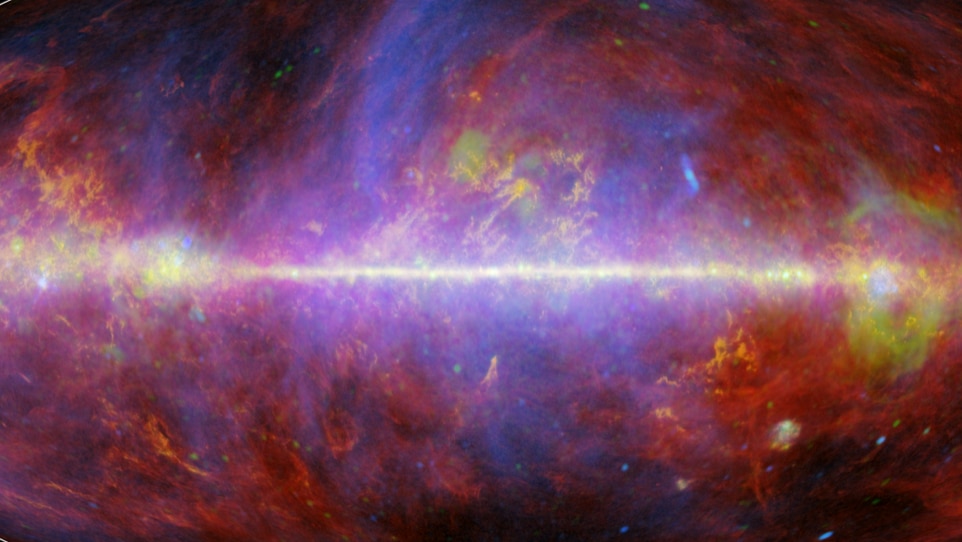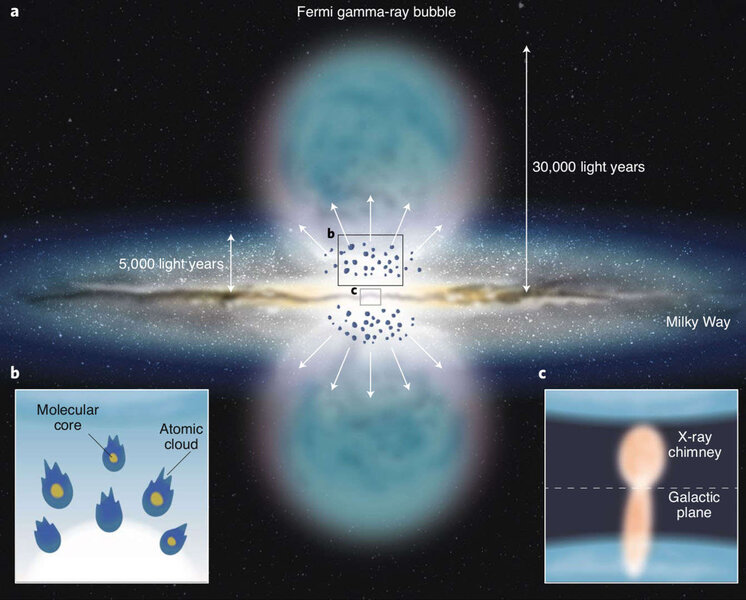Create a free profile to get unlimited access to exclusive videos, sweepstakes, and more!
Is the Milky Way evolving right before our eyes? Something it just spewed out could mean exactly that

Stargazers have been obsessed with finding out about our galaxy’s past through weird planetary formations and falling rocks of mysterious origin, but something that just erupted from the center of the Milky Way could be a glimpse into its future.
What could be star-forming gas was discovered zooming out of the galaxy at warp speed. While it could have originated from our active galactic nucleus (AGN), supermassive black hole Sagittarius A* (Sag A*), that remains unsure. It could have been ejected by the thousands of massive stars burning hydrogen near the Milky Way’s core. Now an international team of researchers who are looking deep into this phenomenon believe that it might be an indication that our galaxy is gradually losing star stuff and with it, the ability to birth more stars.
“Sag A* may have a primary role in driving the nuclear galactic wind that we are observing at the center of our Galaxy," astrophysicist Enrico M. Di Teodoro, who co-authored a study recently published in Nature, told SYFY WIRE. "Because Sag A* is a supermassive black hole, matter orbiting around it eventually falls onto it. During this process of accretion of matter, the black hole releases huge amounts of energy. This energy, together with the energy produced by supernovae and massive stars in the inner regions of the Galaxy, produces shock waves that blast away the gas and creates this 'wind'.”
This is the first time anything like this has been observed in the Milky Way, but it has been seen in other, larger galaxies that form more stars and have much more monstrous black holes. Galaxies have a much easier time spewing star stuff when there is just more to get rid of. Sometimes they form stars so fast that they (ironically) end up belching out the gas they need to form more. This was the case of galaxy SDSS J0905157, whose gas flow was one of the fastest ever at over 1,550 miles per second. Supermassive black holes elsewhere can devour enough astral matter to release jets of gas and dust and photons that are incredibly powerful.
The problem is that there is almost no basis for comparison, because most of these galaxies tend to be so far away that it is exceedingly difficult to see much detail of what is actually going on.
Both hot and cold gas can be expelled from a galaxy. Mysterious bubbles at the center of the Milky Way, discovered by NASA’s Fermi Gamma-Ray Space Telescope and also known as Fermi Bubbles (above), could be one source of hot gas. They emerge from either end of the center and emit more gamma rays than the rest of the galactic disc. It could be that, in our galaxy’s distant past, Sag A* swallowed so much star-forming gas that it released jets like supermassive black holes in other galaxies, and the Fermi Bubbles are relics of that.
The cold gas in our galaxy is where things start to get really mysterious. It is believed to be associated with atomic hydrogen clouds that are lofted on the nuclear wind.
“This cold gas is probably related to the Fermi Bubbles," Di Teodoro said. "The Fermi Bubbles are enormous lobes filled with hot highly-ionised gas at temperatures of millions of degrees, and this hot gas is outflowing from the Galaxy as well, like the cold gas that we have just discovered. They are therefore probably two faces of the same phenomenon. We think that the cold gas clouds that we have observed actually live and move within this hot flow, they are like cold gas islands in a hot gas ocean."
Because cold gas is much heavier than hot gas, it moves around more sluggishly. And in space, hot and cold do not get along, so while it can’t merge with the hot winds blowing around, it is still possible for hot wind to disrupt it without cooling off.
"As shown in the diagram, the molecular gas represents the dense core of these atomic hydrogen clouds. These clouds are pushed by the hot flow, they move within it and interact it," explained Di Teodoro. "These interactions cause a series of hydrodynamical instabilities that should lead to the destruction and evaporation of the cold clouds in relatively short timescale. This process is probably happening in the clouds that we observed, but much slower than we thought, and we still have to understand why."
Going back to SDSS J0905157, supernovae and its AGN were ruled out, but the reason behind its gas outflows is now thought to be pressure from its overflow of stellar radiation. Gas begins to form stars as it condenses. However, radiation pressure goes up along with star formation until they get even and the star formation process gets put on hold. Could it be possible that the Milky Way is self-regulating its star formation like SDSS J0905157? That remains unknown. So does the actual source of the gas, but Di Teodoro is on to something.
"This cold gas could be coming directly from the disk: in this scenario, the cold gas used to be in the galactic disk and it was accelerated because of a shock wave due to supernova explosions and/or to the black hole," he said. "Another possibility, that I personally like even better, is that this cold gas is forming directly within the hot outflow: under certain conditions, the hot gas can became unstable and start cooling down very quickly, leading to the cold cores that we observe. This is a very recent and promising theory that would solve the problem of the existence of these cold clouds within the hot wind."
For now, just try to get your mind around the thought that we could be going through galactic evolution.



























